Getting lost in clay: Why the slow, mindful art of pottery is the new ‘it’ hobby
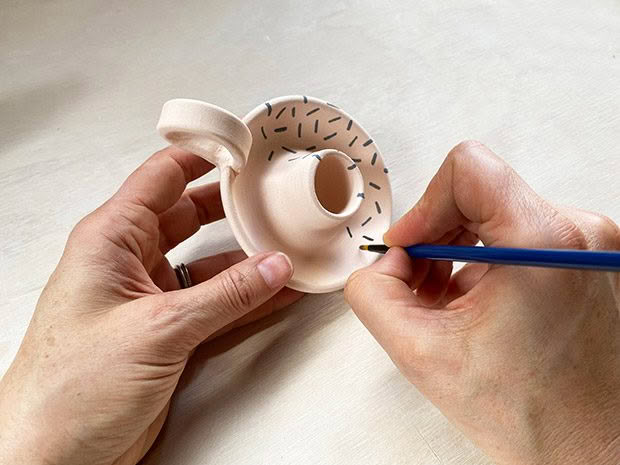
Photo: Rebecca Needham.
The art of ceramics is piquing national interest, with beginner classes selling out around New Zealand. Even Brad Pitt and Leonardo DiCaprio love to sit and potter behind a wheel.
Words: Nadene Hall Images: Rebecca Needham, Nadine Spalter
When pottery classes go live on The Clay Centre’s website, Nadine Spalter is ready for the chaos and tears that follow. “They go up at 8am, and they’re sold out by 8.02am, just like that,” she says.
The professional ceramic artist started her business The Clay Centre by teaching beginners how to get started in pottery back in 2019.
“On those days, I come to work and the phone is ringing off the hook with people who couldn’t get into the class they wanted. I get people saying I’ve pre-sold them (we don’t), I get angry emails, I get the sad stories. When I worked for the Auckland Studio Potters, people would try to bribe me – I could have named my price – and some would cry if they couldn’t get in. I spent quite a bit of my time apologizing to people.”
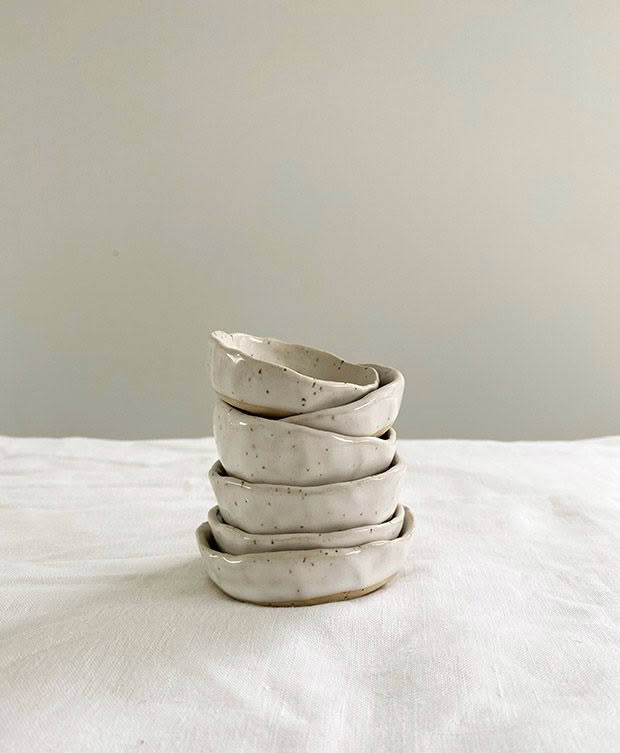
Rebecca Needham says pottery is a nice, tactile way of creating. Photo: Rebecca Needham.
One of those quick off the mark a year ago was magazine graphic designer Rebecca Needham who wanted to do something creative that didn’t involve sitting in front of a monitor. “I’d wanted to do pottery for ages,” she says. “I’ve always loved the aesthetic of hand-built pottery and thought one day I’d like to make my own.”
She did one of Nadine’s ‘taster’ evenings aimed at beginners, three evening classes of a couple of hours each where she learned how to wedge (prepare the clay) and make a basic cylinder shape on a wheel.
CATCHING THE POTTERY BUG
Like so many people Nadine sees at her studio, Rebecca was captivated from the moment she walked in.
“I sat down at the wheel, and it was pure happiness. I was looking around the classroom, and at all of these people of varied backgrounds and ages who were there to learn the craft. I loved the thought that anyone can do this. You get excited about the possibility of what you can do with a lump of clay, it’s so satisfying.”
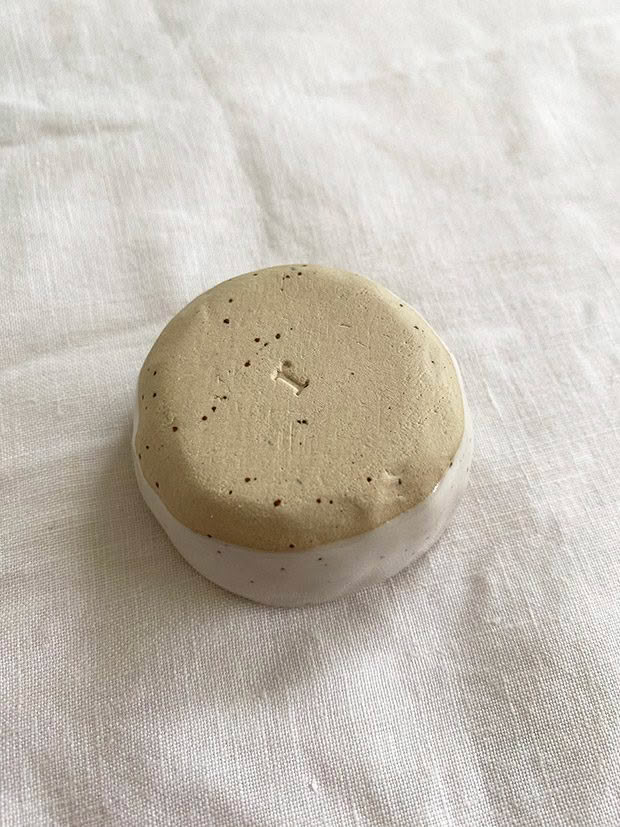
Photo: Rebecca Needham.
Nadine has been potting since 2005 and says Rebecca’s experience is typical of most students. “That’s what happens, when people catch the bug you can see it, and you think ‘oh, there’s another one’ – it was like that for me when I started. I think it’s probably the feel of the clay, and I think that sense of accomplishment when you’ve made something. For me it was from the moment I touched the clay – I was hooked.”
Pottery requires a set of skills that most people have never tried. Everyone is equal, says Nadine. “The challenging aspect of learning how to throw on a wheel is a great learning tool for life and for people. We’ve had surgeons at the top of their careers, they come to a wheel and wine night, and they can’t do it. It doesn’t matter what you do in the real world, when you come here, you’re all the same – you’re learning skills from the ground up.”
SLOW POTTING
For many, it’s a mindful experience, all about getting lost in the clay. It’s known as ‘the potter’s nod’, when your brain just concentrates on working with the clay and nothing else.
“The thought of sitting in my studio and the possibilities of what I could create, it’s exciting and so relaxing,” says Rebecca. “I put on some music, and I get out my drawing pad and sketch some ideas. I like that I can be creative without being in front of a screen. When I sit at the computer and design, it’s not very relaxing when you’re doing it for hours. With clay you sit there and work with your hands – it can be frustrating because things can go wrong, but you learn from those mistakes. It’s a nice tactile way of creating, and you can use a variety of different methods, colours, styles and patterns.”
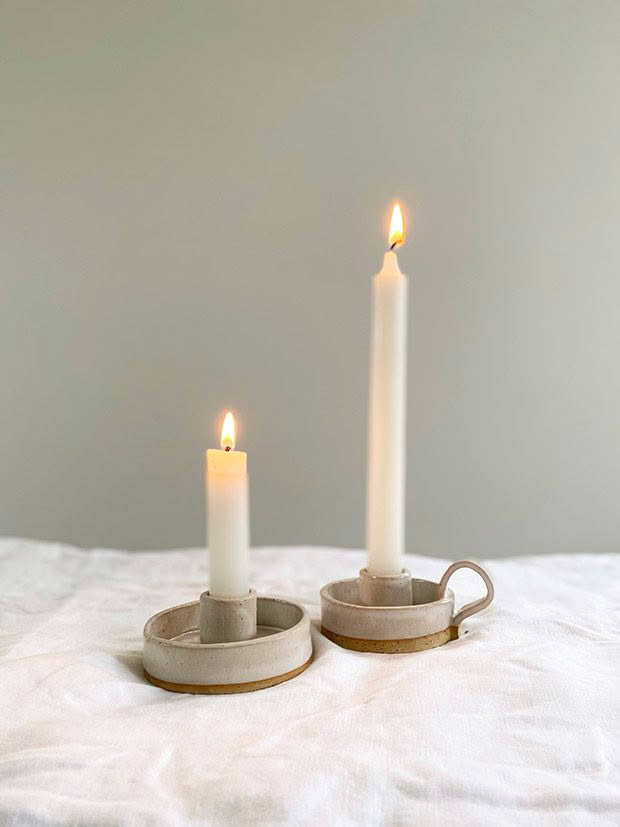
Photo: Rebecca Needham.
Some potters compare it to a drug that calms the brain, giving you a sense of wellbeing. “You don’t think about it,” says Nadine. “If you get too cerebral, it’s about trying to keep that voice of self-doubt out of your head. If I approach (my potting) with negative thoughts in my head, I can’t do it.”
WHY CREATING IS AN IMPORTANT PART OF LIFE
Research shows creativity is as important for adults as it is for children in terms of good mental health. To live a healthy, fulfilled life, it’s important to be creative as it’s the only unique contribution we make to the world.
“If we want to create meaning (in life), we need to make art,” says emotion researcher Dr Brene Brown. “Unused creativity is not benign. It metastasises. It turns into grief, rage, judgement, sorrow, shame.”
Nadine says she finds a lot of people come to classes and tell her they can’t create, something Dr Brown also found in her research.
“It’s our job to say that’s nonsense, we’re inherently creative,” says Nadine. “We’re born creative, but it’s beaten out of us gradually. There’s a kind of an approachable way with pottery because it’s also a skill, a technique. We teach people the technique of how to make a pot, and then as their skill grows, they start to let go, because they’re achieving – I see it all the time.
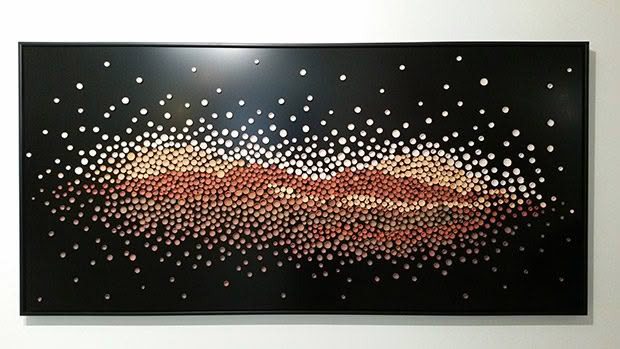
Nadine’s piece, called Gestation, is made of more than 1400 tiny pots thrown on a wheel. Photo: Nadine Spalter.
“We have a member’s area, sort of like a gym for potters that’s open from 9am until 10pm, and we have a lot of people building their businesses there, selling their pots. I’ve seen the most incredible growth from people who came in saying ‘I don’t have a creative bone in my body’.”
People also find a joy in it, even when things don’t go to plan. “I remember reading somewhere, someone said it was the perfect reward system – you get quite a lot of failures, then you get your reward, and it keeps you coming back.”
Even successfully getting a pot into the kiln is no guarantee. While you can try to predict what will happen, a piece may crack, it may not be the size you want as pots shrink during firing, or even the colour you expect.
View this post on Instagram
“It just gets better and better,” says Rebecca. “By the time you fire it, it’s so exciting because you’re never quite sure of what outcome you’ll get.”
Nadine says her most popular classes are in the evening, and they tend to be younger people, and couples, or groups of friends. Day classes tend to be older people or the self-employed who find it easier to take time off. She says what gives her a lot of joy is helping people find a hobby they love.
“We get quite a few people who don’t fit into other things, and this has been wonderful for them. You can be social or solitary, especially when you’re working on the wheel – you’re in your own space there, you can talk to your neighbour, or not because you’re working on your thing.
“The most amazing thing I see is the children who come here. Maybe they’re not sporty, they’re not fitting in other places, but they find pottery and it’s a godsend for them to come here once a week. They’re learning a skill; they’re taking things home they can use and be proud of. There are benefits all the way down the line.”
TURNING POTS INTO PROFIT
Aside from teaching in her school, Nadine is also an accomplished, award-winning ceramic artist (@nadine_spalter_ceramics).
It was 10 years before she had the courage to show and sell her work. People often tell her how talented she is, but she says it’s important for would-be potters to understand that being good at it is mostly nothing to do with inborn skills.
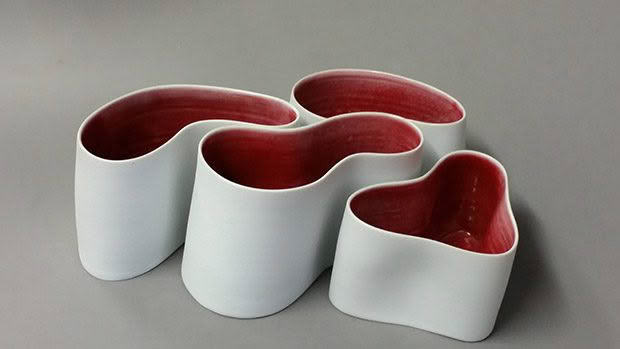
Photo: Nadine Spalter
“I’ve worked really hard, more hours than I can imagine; undoubtedly there is natural talent out there, but 90% is hard work.”
Some of the beginners she teaches are advertising and selling pieces right from the first day. “Instagram has got a lot to answer for,” she laughs. “It has a huge role in all of this. You’ve suddenly got people with a little bit of skill and their stuff can sell which is what blows my mind – we’ve created a monster. The quirkier, the rougher, the more imperfect, the better. I could have made a fortune when I started!”
View this post on Instagram
However, part of the training in becoming a good potter is learning to evaluate your work. “We’re trying to teach people to be discerning, offering gentle encouragement to evaluate their work before they put it out in the world.”
Rebecca’s dream is to create pottery, learn more techniques, and eventually sell some of her work. The 2021 lockdowns interrupted her ability to fire pieces at The Clay Centre, so she and her husband have built a studio in their garage, she’s just bought a kiln, and is already showing off some of her work on Instagram (@r_ceramics).
“There’s a satisfaction in other people appreciating your work, and I love using the items I make. They’re functional, and they (generally) look good. Even if something hasn’t turned out how I wanted it to, it’s still aesthetically pleasing because it’s handmade. I love it.”
It’s over 15 years since Nadine first sat at a wheel, but she says she still gets the same buzz she sees in beginners like Rebecca. “I still love it, I still see pots that make my heart flutter, that excitement I got when I first started. It lights a fire.”
The basics of the art of potting
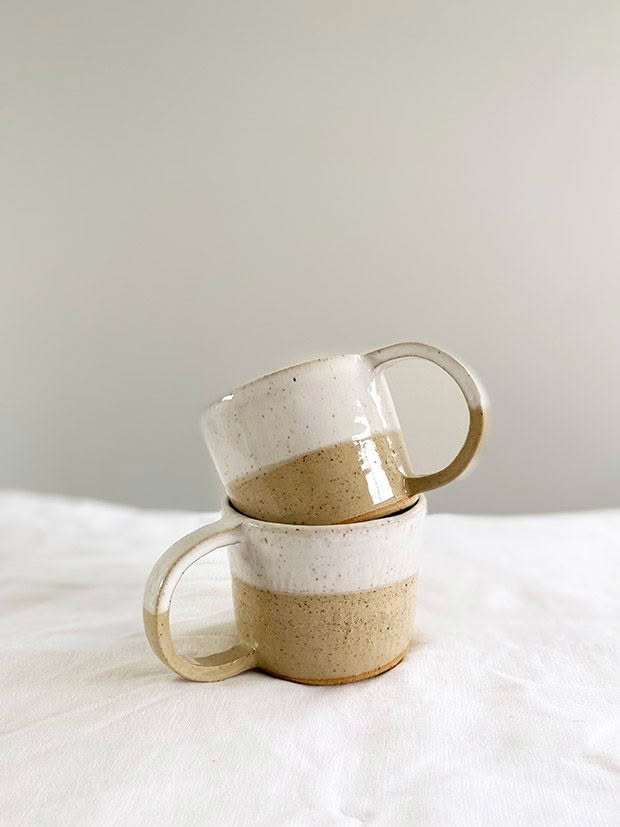
Creating something out of clay is a series of skills. You can use your hands to shape and carve clay or use a pottery wheel to create round shapes. Items are air-dried, then fired, glazed, and fired a second time to finish.
THE CLAY
There’s an enormous range of clays, from bright terracotta to speckled creams and jet black. Some are smooth, others are quite rough and rustic with a lot of texture. Different types of clay are sold in 5kg, 10kg, or 20kg blocks. These must be kept wrapped up to maintain moisture levels, so the clay stays malleable.
The three basic types are:
• earthenware – oldest and most common clay, easy to work with, low shrink factor, used to make bricks and planter pots;
• stoneware – grey, easy to work so popular with beginners, waterproof once fired;
• porcelain – very smooth, can be moulded until it’s almost translucent, glazes tend to look more vibrant.
TOOLS & EQUIPMENT
The pottery wheel
A round, spinning platform sits within a basin, so you can ‘throw’ round shapes, from plates to large pots. You vary the rate of spin using a foot pedal (like a sewing machine) so you’re using both hands to shape the clay.
Some old, manual versions turn when you pump your foot on a pedal attached to the gear mechanism, but most sold these days are electric. “There are waiting lists for wheels, but it’s a fantastic thing to have at home,” says Nadine.
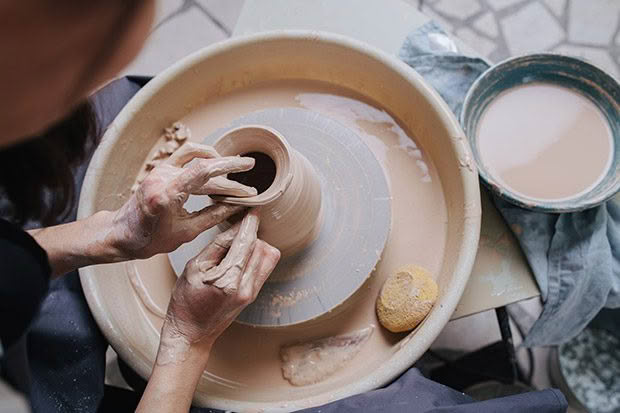
When Rebecca started looking for a wheel, she watched as even well-used ones sold for crazy amounts on Trade Me, close to the cost of a new machine ($1000+). She counts herself as extremely fortunate that a friend of a friend had one she no longer used and gifted it to her.
Pottery wheels can also be hired, although there are often waiting lists. A basic tool kit to shape, carve, and texture clay on a wheel starts at $15.
The hand tools
You can create round, evenly shaped objects such as mugs, jugs, and pots using hand tools. Many look like what you’d see in a dentist’s clinic, ranging from sharp needle-like tools to scrapers and sponges. There’s an enormous range for sale online, with kits starting from around $20.
Another useful accessory is a banding wheel, a turntable that sits on a heavy steel or aluminium stand. It’s similar to what cakemakers use, so you can turn a piece as you work on it and have both hands free.
SKILLS
Pinching
A ball of clay can be pinched into basic shapes.
Throwing
Learning to ‘throw’ a pot on a wheel is a complex series of skills. First, you wedge the clay using a special technique to remove air bubbles. It looks similar to kneading bread, except you’re trying to remove air, not incorporate it.
You must centre the clay on the wheel to create an even, balanced item – that’s not as easy as it sounds. If it’s not centered properly, the item won’t sit straight. As the wheel spins, you use your hands and tools to create different shapes.
The kiln
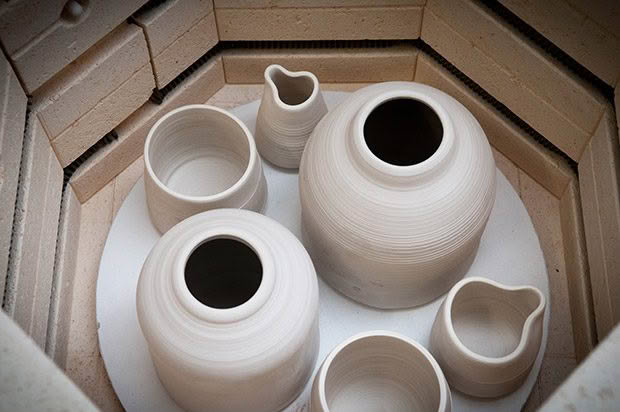
Once you’ve made a pot, it’s left to air dry, then bisque fired so it’s hard and dry, but still porous enough to glaze. The glaze is applied by dipping pots in the thick liquid or hand-painting with brushes, then pieces are left to air dry. Once dry, it’s fired again at a much higher temperature to finish.
Kilns are very expensive to buy, often costing thousands of dollars, up to $10,000+. “There’s huge freedom in getting your own kiln,” says Nadine. “That’s a game-changer for a potter.”
However, because of their high price, many people instead pay a firing fee to use a kiln owned by a community group, club, or facility like The Clay Centre.
THE TECHNIQUES
These are just a few of the many techniques used to shape clay.
Coiling
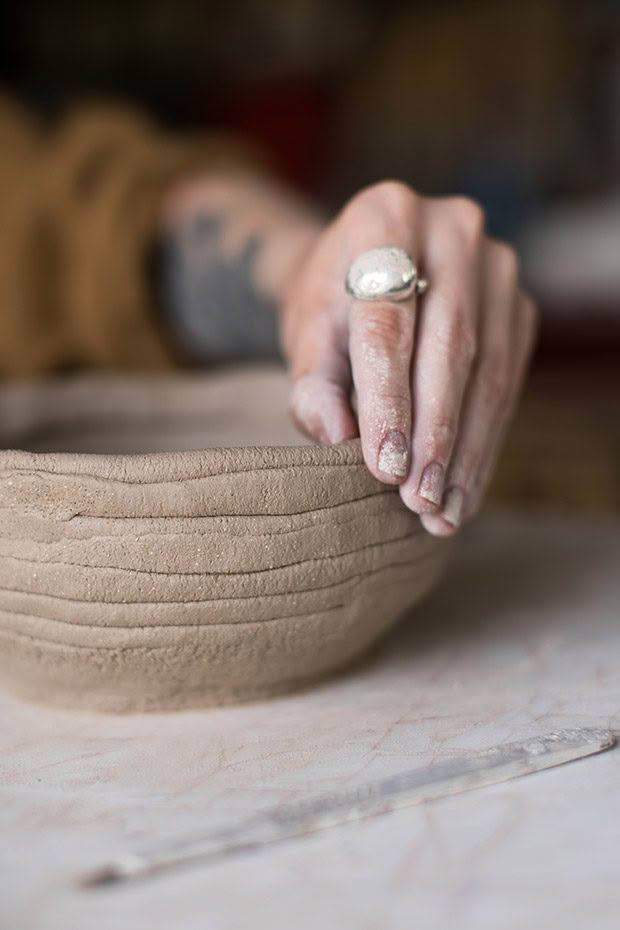
Pots are made up of layers of evenly sized coils, sitting one on top of another to build up a shape. Once it’s the shape you like, the sides are smoothed.
Slab building
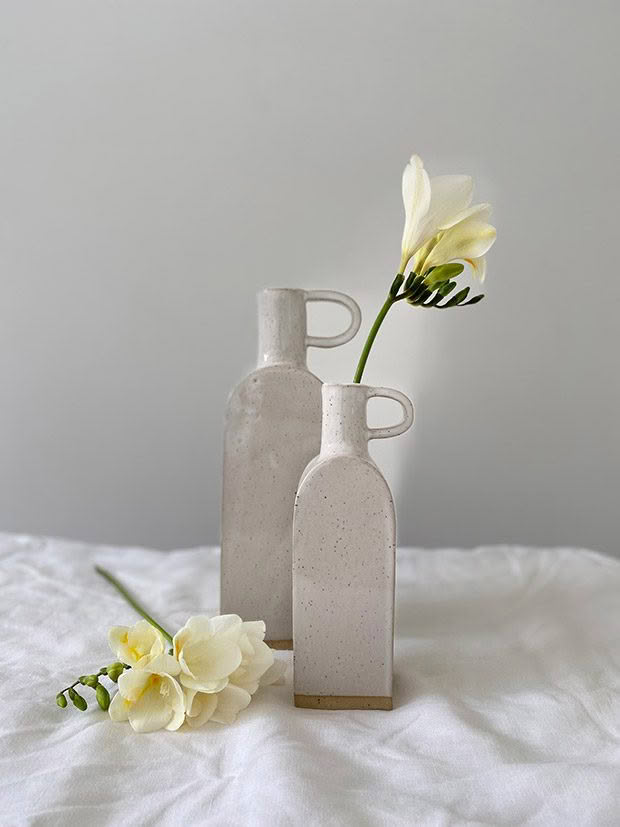
Slab vases made by Rebecca — no wheel necessary. Photo: Rebecca Needham.
Clay is rolled into sheets, then cut and joined together to create a shape. It’s possible to get an almost-perfect mug or cylinder using this technique, without the need for a wheel.
Hand building
Sculpting clay into organic shapes, such as animals or human forms.
Slip casting
This uses moulds to create the same sized shape repeatedly.
Glazing
Once pots have been bisque fired, they can be glazed. Glaze is a mix of pigments and particles mixed into water to form a thick slurry. Pots are dipped into it or it’s painted on, then left to dry. If a potter wants to create a multi-coloured piece, they may wait for a first glaze to dry, then dip it into another glaze.
“It’s challenging,” says Nadine. “You can take as much or as little out of it, you can get really technical. Whatever lives in your head, you can make it real.”
 This article first appeared in Nadia: A Seasonal Journal Magazine.
This article first appeared in Nadia: A Seasonal Journal Magazine.

